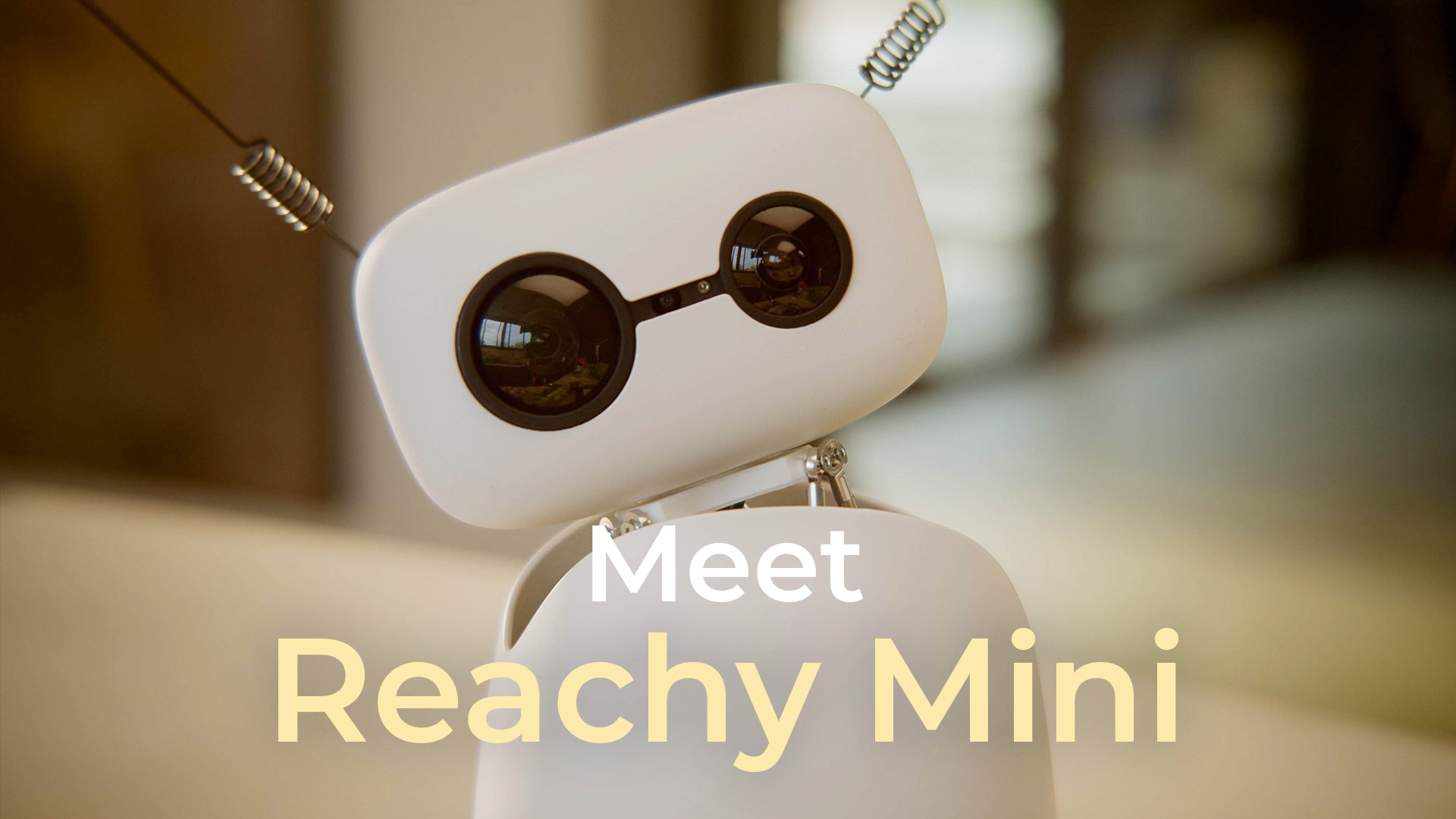Robotics is now coming right to your desk with Reachy Mini, Hugging Face’s new desktop robot. This open-source robot friend is here to make things better for everyone. It combines affordability, ease of use, and features new AI capabilities. This mix changes how people see robotics for developers, teachers, and people who like building things at home. You can use this robot for trying robotics programming or testing out human-robot interaction. This robot makes it easier for more people to get into robotics, which was previously inaccessible due to the high cost and limited accessibility of most models. The robot is only 11 inches tall, but it could change how many people use and make robots. Hugging Face’s open-sourced robot is opening up new doors for anyone interested in robotics, AI, or just having a cool new desk buddy.
Reachy Mini’s Open-Source Revolution in Robotics
What makes Reachy Mini stand out is its strong connection with open-source ideas, which is opening new doors for AI-driven robotics. It has open hardware and software, so anyone can use it to test, learn, and make new things in their way. With this mini robot, developers can make unique apps in Python, and soon other languages like JavaScript will also work. This gives people the freedom to use creative coding and try out fresh ideas.
When you use an open-source way, Hugging Face lets everyone not only work with the tools that are there right now but also change and improve them. This style is for the whole community. It helps people work as a group, spreading innovation and bringing costs down.
Breaking Down the Design: Hardware and Modularity
The hardware design of Reachy Mini combines a smart look with an easy setup, making it easy for all people to use. The motorized head can move in six different ways, so it can do very detailed and natural movements. The moving antennas also help it show more feelings and make its actions look real.
The modular build keeps things flexible. You can put it together by yourself because it comes as a DIY-ready kit. No matter if you pick the Lite version or the wireless model that uses Raspberry Pi, modularity lets you change or add parts to fit what you want.
Reachy Mini is only 11 inches tall and weighs just 3.3 lbs, but it still comes with features like full body rotation, microphones, cameras, and speakers. These parts give you simple ways to use new AI applications and enjoy smooth human-robot interaction. This careful design makes Reachy Mini work well for both robotics professionals and people in education.
How Open-Source Principles Empower Developers and Educators
Reachy Mini shows what open-source robotics can do to help inspire creativity. It is made to support creative coding and works well with the Python SDK. Soon, it will also let people use JavaScript and Scratch with it for easy programming. This means that both experienced developers and teachers can make the most of what Reachy Mini offers.
For people interested in AI, this robot opens up new ways to build and test AI applications. You can run your ideas in simulation or use the real hardware. If you use Hugging Face’s open features in hardware and software, it is even easier to work together and find answers for real-world problems.
Teachers find a lot of value in using these robots in their teaching. With this platform, students can move from learning basic coding to working with more advanced robotics. They get to try out AI, look at how things move, and see how robots interact. This hands-on practice gives them a strong understanding, preparing them well for the future in robotics.
Unlocking Human-Robot Interaction with Reachy Mini
One thing that makes Reachy Mini different is how much it focuses on human-robot interaction. The robot has a motorized head and a body that rotates. This lets it show expressive movement, making every meeting or activity with it feel more exciting and fun for people. Because of its multimodal sensing design, with cameras, microphones, and speakers, it can answer with both sound and pictures. This helps you and the robot talk easily and clearly.
AI lets Reachy Mini do much more than basic tasks. It’s not just another coding tool. It turns into something like a friend who will listen, then react, and even work with you. This kind of flexibility means the robot will fit right into schools, research places, or even at home for anyone who wants to explore new ideas.
Real-World Use Cases: From Classrooms to Research Labs
Reachy Mini Lite is to be found everywhere now because it is very handy, easy to use, and works well in many settings. The way it helps real people can be seen in these examples:
- Classrooms: Teachers use it for robotics and programming classes. Students get to work with it directly, so they learn coding and how to make things work by doing.
- Research Labs: This robot is good for simulation work and testing ideas with AI, as it is open-source and has strong multimodal sensing. It lets people try many things in a real way.
- Education: It helps improve how teachers teach, since theories and real-world experimentation can fit together well.
The wireless version works fast with AI platforms like Hugging Face Hub. This helps with testing and building new things. Thanks to powerful parts inside, like Raspberry Pi, and its easy-to-see expressive movement, Reachy Mini Lite fits right in at work and school for lots of different jobs.
Community-Driven Customization and Collaboration
The success of Reachy Mini comes from its growing user base and support from the Hugging Face community. This platform lets people upload, share, and download new robot behaviors, which brings many ways to try new things with your robot.
Hugging Face’s robot follows open-source principles. It invites users to share demos and step-by-step guides. These show off new and creative ideas. People in the community work together on projects, and this helps the robotics world keep getting better. With wireless, everyone can share what they make over Wi-Fi. This means that new ideas can quickly spread around the world.
When you join the Hugging Face Hub, you can use top AI tools. These tools help with speech recognition, fun animations, and more. This makes working with robotics simple and social. So, people who love AI, Hugging Face, and robotics can connect, whether they are in a classroom or a coding lab.
Conclusion
Reachy Mini is a big step forward in open-source robotics. It mixes new design with easy access for both developers and teachers. As we saw, its modular setup lets you change or add parts easily. This helps make working with the robot better in different places, like a classroom or a lab. By using ideas and help from many people in the open-source community, Reachy Mini keeps getting better. This way, it fits what more people want and need. Using this robot system can give you new ways to work with robots. If you want to find out more, you can book a free talk with us and see how Reachy Mini can help with your projects.
Frequently Asked Questions
What makes Reachy Mini different from other desktop robots?
Reachy Mini is special because it has open-source hardware. This lets you change it to fit what you need. The motorized head allows for expressive movement. It works well with AI features.
The price is affordable. The antennas can move, and the whole body can turn around with full rotation. These things make Reachy Mini a one-of-a-kind desktop humanoid friend.
Can beginners with no coding experience use Reachy Mini?
Yes, even people who are new to robotics can try out Reachy Mini. This robot is good for creative coding in Python. It comes with some apps built in, so you can use it right away. For those who are just starting with programming and want to learn, the Reachy Mini Lite is a simple way to get into robotics and experimentation.
How does the open-source community contribute to Reachy Mini’s growth?
The open-source community helps drive new ideas for the Reachy Mini robot. Platforms like Hugging Face Hub let people share their applications and demos. This sharing helps with all kinds of AI work. Because there is always feedback and people work together, the robot keeps getting better. It changes to fit what different people want and need. With active support, Reachy Mini grows better over time.
Is Reachy Mini suitable for educational institutions in the United States?
Absolutely! Reachy Mini is a great fit for classrooms in the US. It gives teachers and students an affordable way to learn about robotics. The wireless setup is easy to use, and there are hardware warranties to back it up. These features help in many types of classrooms, so educators across the country can get a lot from them.
What are the future updates planned for Reachy Mini?
Updates coming in late summer 2025 will add improved AI applications, better simulation tools, and new production batches. There will be more open-source features added, so Reachy Mini will become even easier and more useful for everyone.
When you use Reachy Mini, you join the future of robotics. It gives you a mix of easy-to-use tools, a strong community, and room for creativity.

Zak McGraw, Digital Marketing Manager at Vision Computer Solutions in the Detroit Metro Area, shares tips on MSP services, cybersecurity, and business tech.

